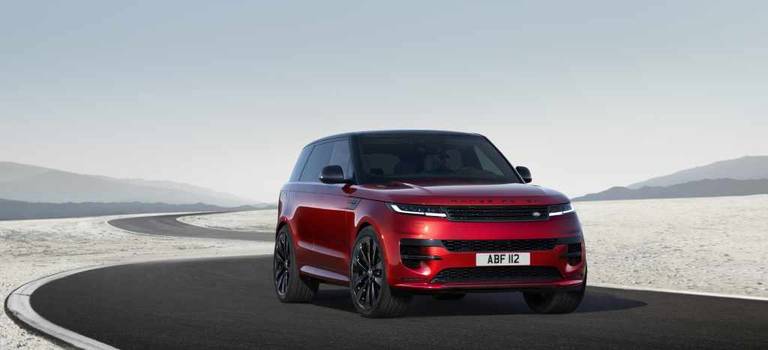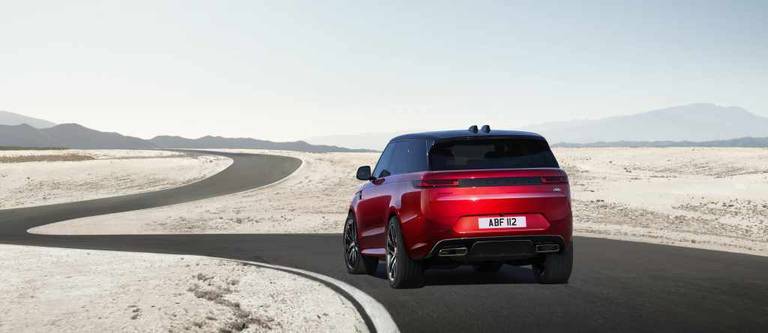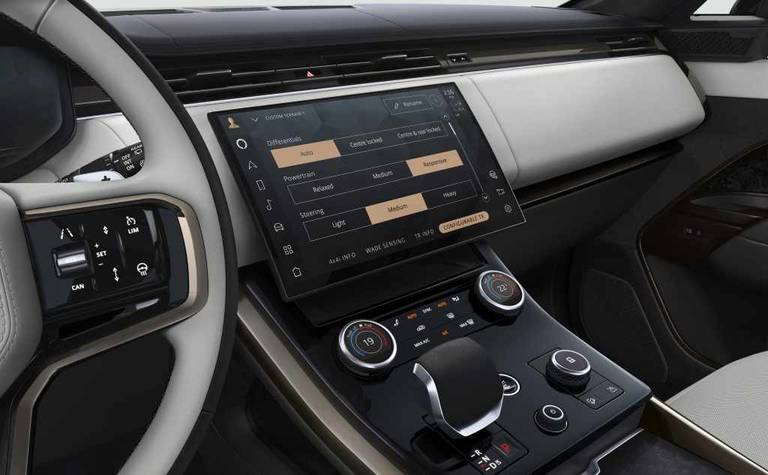The first Range Rover of 1970 had two doors, and a hatchback. It was a car out of the box, but above all with a clear spirit of sport, as well as luxury and travel. The third generation Range Rover Sport continues to be faithful to all this, in terms of sportiness, style and content. Its design has muscular elements, taut lines and clean cuts. The nose sets and, in order to create a pleasant contrast, as well as to give strength, narrow lights were chosen. From the side it invites you to look for the play of light that illuminates the side ribs.
Petrol, Diesel and hybrid
During the big shift towards electrification, Land Rover is not betraying the brand’s loyal following, offering petrol and diesel engines, with mild and plug-in hybrids. However, we will have to wait for the full electric Range Rover Sport.
The protagonist of our test is the one powered by a 4.4-liter twin-turbo V8 with 530 horsepower. Which, with respect to the Sport name, is exactly what we wanted to try in the first version of the trim, the richest in the range and the only one available for that version. The setup is a short wheel SWB. With a turbodiesel S starting price of 91,200 euros, the joy of being able to drive a V8-powered car requires more than a smart step forward. As registered at the registry office, the First Edition P530 AWD cost 146,200 euros.

Comfort and technology on board
The interior reflects the shape of the latest Range Rover. Only a few details differentiate the two versions, with the Sport having a steering wheel with a slightly smaller diameter and the connection between the center console and the screen in the center of the dashboard being made differently.
On board you immerse yourself in a modern and elegant environment at the same time. An array of finishes pleases the eye as well as the touch, with the top of the dashboard covered in waterproof material and inlays reminiscent of a lacquered piano surface. The panforte style wood paneling in the upper area of the door panels is also original. You climb into the seats, considering their height from the ground, but once you’re installed inside you enjoy excellent seating. And not just those who were put forward. Those sitting in the back have a few centimeters below their heads than those who live in the classic Range, but the feeling of comfort is the same.
The driving position is optimal, with adjustments that can be fully adjusted to the size of each person thanks to the electric movement of the front seats and the steering wheel that has multifunction buttons. There aren’t many physical buttons on the center console, but they’re all easily accessible and easy to understand, including the climate control temperature adjustment, drive mode wheel and audio system volume adjustment. The large central touchscreen offers access to an impressive number of features but is still easy to use once you get the hang of the commands, pages and their position on the screen. Note the feature of the trunk, which has a generous size and can be adjusted in length to facilitate loading.

Strong, fast and four-wheel steering
As mentioned, the Sport version also uses the MLA platform that served as the launch pad for the latest generation Range Rover. There are many technical features designed to make it safe and reliable to drive, starting with the standard presence of pneumatic suspension and dynamic shock control. All versions can also take advantage of the advantages of four-wheel steering and advanced electronic control in terms of safety and driving dynamics. Inevitable, along with all-wheel drive, is the Terrain Response 2 control program that makes all models in the Land Rover range efficient and unstoppable on any type of road.
The V8 engine does not disappoint, not only in terms of power and high torque characteristics. Very suitable for the type of car, it can be used even at 1,000 rpm without the slightest sign of discomfort. The torque delivery characteristics make it perfect and very usable once it exceeds 2,000 rpm. With the gearbox in automatic mode you can push the revs all the way up, with the transmission controller automatically shifting into the highest gear every time the rev counter needle ticks 6,000. This is not a record-breaking top speed, but the engine looks quite similar to the car.

In terms of performance it does not disappoint, considering the type of car and above all the weight of more than 23 quintals which is quite a lot to carry around. Acceleration results are more than satisfactory, even if we could not match the promised time of 4″5 in the race from 0 to 100 per hour. 4″86 in the special article should not be underestimated, however, considering that the bus reaches 160 per hour in 10 “74. Only 3″11 is enough from 80 to 120 per hour, but the speed is continuous and continues even towards the top speed, considering that 10″68 is enough to reach 180 per hour.
Considering the type of vehicle, its weight, all-wheel drive and engine type, it is impossible to expect low fuel consumption. Even at 130 times per hour on the highway you do not go more than 8.35 kilometers of travel per liter of green, which more or less corresponds to the average calculated during our tests. Normal driving, without even forcing too much when accelerating, results in an average similar to that of the urban ones, with a mileage of 4.5 km/liter which is more possible.
Despite its sporty function, the Range Rover Sport can also cope with harsh off-road conditions following the type of international work for Land Rovers in particular. Good braking and handling. The last note is for a sufficient level of comfort on board thanks to the work done on the trim and soundproofing of the interior. Comfort that certainly deserves the price and prestige of the car.
Powered by


























